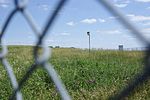Niagara Aerospace Museum

The Niagara Aerospace Museum is an aviation museum located in Niagara Falls, New York, in the old terminal building of the Niagara Falls International Airport. The museum has been located in a number of places in the Niagara Falls/Buffalo area. It had been located in the Niagara Office Building in downtown Niagara Falls and relocated in 2008 to the site of the then HSBC center on the waterfront in Buffalo, NY, where it was known as the Ira G. Ross Aerospace Museum. In the summer of 2013, the museum moved to its current location.Both Bell Aircraft Corporation and Curtiss-Wright Corporation had corporate headquarters, research & development (R&D), and manufacturing operations nearby in the middle of the twentieth century, and much of the material on display is from these two aviation companies. Among its many displays are many examples of early to mid-twentieth century piston, turbo-jet, turbo-shaft, and jet engines, as well as several static display aircraft including early Bell helicopters, an example of the World War II Bell P-39 Airacobra, and the Bell X-22 tilt-ducted-fan VSTOL aircraft.
Excerpt from the Wikipedia article Niagara Aerospace Museum (License: CC BY-SA 3.0, Authors, Images).Niagara Aerospace Museum
Porter Road, City of Niagara Falls
Geographical coordinates (GPS) Address Website External links Nearby Places Show on map
Geographical coordinates (GPS)
| Latitude | Longitude |
|---|---|
| N 43.1002 ° | E -78.9426 ° |
Address
Niagara Aerospace Museum
Porter Road 9990
14304 City of Niagara Falls
New York, United States
Open on Google Maps





